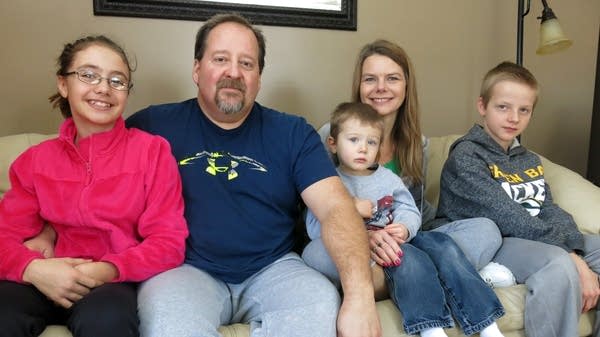Checking in on the child welfare system in Minnesota

Go Deeper.
Create an account or log in to save stories.
Like this?
Thanks for liking this story! We have added it to a list of your favorite stories.
As schools return to in-person learning, we continue our series of conversations on student mental health and well-being by examining child abuse and the COVID-19 pandemic.
Child welfare agencies have reported a decrease in the number of suspected child abuse reports and investigations since the start the pandemic. The Minnesota Department of Human Services says child protective services received 22 percent fewer child abuse reports during the first eight months of safety restrictions.
“I would suspect that once kids are back in schools, the number of reports will go back up,” said Miriam Itzkowitz, a social worker and director of trauma informed care at the Institute to Transform Child Protection at Mitchell Hamline School of Law.
“All school staff are considered mandated reporters,” Itzkowitz told host Tom Crann, “and almost 80 percent of reports that come into child protective screening in Minnesota come from mandated reporters, primarily at schools and in health care settings.”
Turn Up Your Support
MPR News helps you turn down the noise and build shared understanding. Turn up your support for this public resource and keep trusted journalism accessible to all.
“What I’m curious to know is whether the percentage of reports that are screened in and investigated changes,” Itzkowitz said.
There are dangers to overreporting. The child welfare system is meant to protect children from abuse and neglect, but some reports are the result of misinterpretation.
“When people see parenting that is different than their own, they can perceive that as a safety risk rather than just a difference,” Itzkowitz explained.
In some situations, reporting can steer children into the child welfare system when the real issue is that their families need supportive services.
Itzkowitz also cautioned that, for children, removal from their homes and attachment figures and placement in foster care is “the biggest trauma that can happen.”
“I think that should be sort of the nuclear option, and that that should happen even less than it does,” Itzkowitz said.
Overreporting can exacerbate inequities in the child welfare system as well. In Minnesota, “We have one of the worst rates of disproportionate [child welfare] reporting and investigation for communities of color,” Itzkowitz said.
Use the audio player above to listen to the full conversation.
This series is part of Call To Mind, an initiative from MPR to foster new conversations about mental health. Learn more at CallToMindNow.org.


